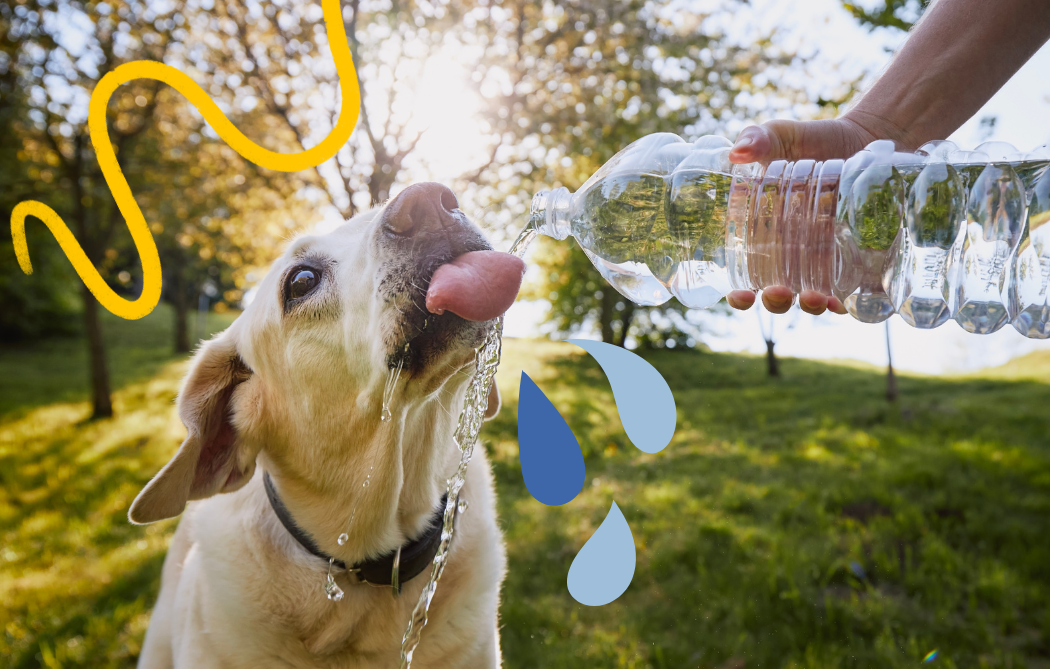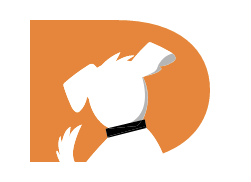
Is your furry friend lapping up water like there's no tomorrow? You may have noticed this and keep wondering why. Dogs, like humans, need water to survive and stay healthy.
About 60% of your dog’s body is made up of water. However excessive thirst in dogs can be a sign of an underlying issue that requires attention.
This article is going to discuss some of the reasons why your dog may be drinking too much water. It will also suggest practical steps you can apply to help your dog.
Understanding Your Dog's Thirst
Like humans, dogs have water needs. This is vital to keep them hydrated and healthy.
The ideal water intake for dogs can vary depending on factors. These factors may include their size, activity level, environment, and general health. Your dog should generally drink 1 ounce of water for every pound of body weight. This means that a 20-pound dog would need around 20 ounces (590 milliliters) of water daily.
This is only an average estimation. Individual dogs may have different water needs. More active dogs, or those in hot climates may need more water. The same applies to nursing or pregnant dogs or those with certain health conditions. Also, dogs fed a dry kibble diet may need a little more water compared to those on a wet or raw food diet, as dry kibble contains less moisture.
Check their water bowl to ensure it doesn't run dry, especially during warmer months or after exercise. It's better to have a bigger water bowl to accommodate their needs. But what are the possible reasons why your dog is drinking too much?
Possible Reasons for Increased Water Consumption
Several factors can contribute to a dog's increased water intake. It's important to consider these possibilities. Here are some potential reasons:
1. Heat, Exercise and Dehydration
When dogs are in hot weather or engage in rigorous exercise, they could get dehydrated and may tend to drink more water. So, make sure your dog has access to fresh water at all times.
To cool down and replenish lost fluids, they engage in excessive water consumption. If you live in a warm climate or have been exercising your dog more than usual, increased water consumption may be normal, but you still need to be aware of signs of dehydration.
Dehydration can be very harmful and result in major health issues, so know how to recognize the signs and properly care for an overheated dog.
2. Diet
The type of food your dog consumes can influence their water intake. Dry kibble, for example, contains less moisture than wet food. As a result, dogs on a dry food diet may feel thirstier and drink more water to compensate. Diets that are heavy in protein or salt might cause your pup to drink more water.
3. Medications or Medical Conditions
Some medications can lead to increased thirst in dogs. Additionally, certain medical conditions may cause excessive drinking. Common health issues associated with increased water consumption include:
- Diabetes: Diabetes affects dogs in the same way that it does humans. This condition raises blood sugar levels and can cause dogs to become more thirsty. If your dog drinks too much and displays other diabetic symptoms like frequent urination, weight loss, or increased appetite, have them examined by a veterinarian to rule out this diagnosis.
- Kidney disease: This is a common issue with older dogs. The kidney's job is to When the kidneys are not functioning well, they may struggle to concentrate. This leads to increased water consumption. If your dog's water intake spikes suddenly and they show other signs like decreased appetite, weight loss, or lethargy, it's essential to have their kidney function evaluated by a veterinarian.
- Cushing's Disease: An excessive amount of cortisol hormone is produced when someone has Cushing's disease, also known as hyperadrenocorticism. One of the defining signs of Cushing's illness in canines is increased thirst. Alongside excessive drinking, other signs may include increased urination, a pot-bellied appearance. It can also include thinning of the skin. If you suspect Cushing's disease, consult with your veterinarian for appropriate testing. He will also administer needed treatment options
- Urinary Tract Infection (UTI): It can cause dogs to drink more water. UTIs occur when bacteria enter the urinary system, leading to inflammation and discomfort. Dogs with UTIs may also display symptoms like frequent urination, and straining while urinating. They may also have cloudy or bloody urine. A veterinarian can diagnose a UTI through a urine sample. He will then prescribe appropriate antibiotics.
- Psychogenic Polydipsia: This is a medical term that refers to exactly what we've been discussing - excessive water drinking. In this case, the abnormally high water intake is primarily driven by neurological or behavioral factors, rather than a physical condition. Some dogs can drink excessive water because of stress, anxiety, or obsessive behavior.
If you suspect your dog's excessive thirst is related to a medical condition, it's best to seek veterinary attention promptly for a proper diagnosis and treatment.
4. Stress or Anxiety
Like humans, dogs can experience stress and anxiety. This can manifest in various ways, including increased water consumption. A recent change in your dog's surroundings, habit, or experience of a traumatic event may cause excessive drinking. If you notice any signs of stress in your dog, see a professional behaviorist.
When to Seek Veterinary Care
While occasional increases in water consumption may be normal. Do not ignore persistent or significant changes in your dog's drinking habits. If you notice any of the following signs, it's time to call your vet:
- Excessive drinking accompanied by increased urination
- Changes in appetite or weight loss
- Lethargy or decreased activity levels
- Vomiting or diarrhea
- Signs of pain or discomfort
How to Address Excessive Thirst in Dogs
If your dog's excessive drinking is not due to a medical condition there are some simple steps you can take to manage their water intake:
- Provide Fresh Water: Ensure your dog always has access to clean and fresh water. Regularly change the water to prevent bacterial growth and encourage hydration. Keeping a fish tank out of your dog's reach can prevent it from drinking from the aquarium if you have one at home.
- Watch Exercise and Temperature: Avoid exercising your dog during the hottest parts of the day. Provide ample opportunities for rest and shade. This can help regulate their body temperature and reduce excessive thirst.
- Evaluate Their Diet: Consider the type of food you are feeding your dog. Follow feeding guidelines recommended by your vet. If they are on a dry food diet, you might try adding some moisture-rich options. You may also switch to wet food if appropriate. Talk to your vet regarding any dietary changes that are suitable for your dog's needs.
- Reduce Stress: If stress or anxiety seems to be the cause of your dog's excessive drinking, try to identify and address the underlying triggers. Make sure your dog has a secure and calm environment. If you need more help, talk to your veterinarian or see a professional dog behaviorist for more guidance.
Conclusion
While occasional increases in water consumption may be normal for dogs, significant and persistent changes should be investigated further. Knowing the many causes of excessive thirst might help you identify whether it's a normal reaction or an indication of a serious health problem. Consult with your vet if your dog's drinking habits raise serious concerns. Your vet can diagnose and suggest the best course to take to ensure your pup stays healthy and hydrated.
